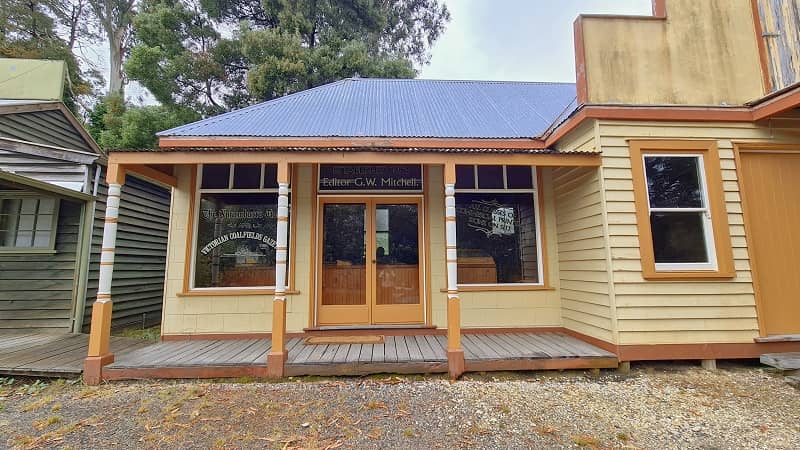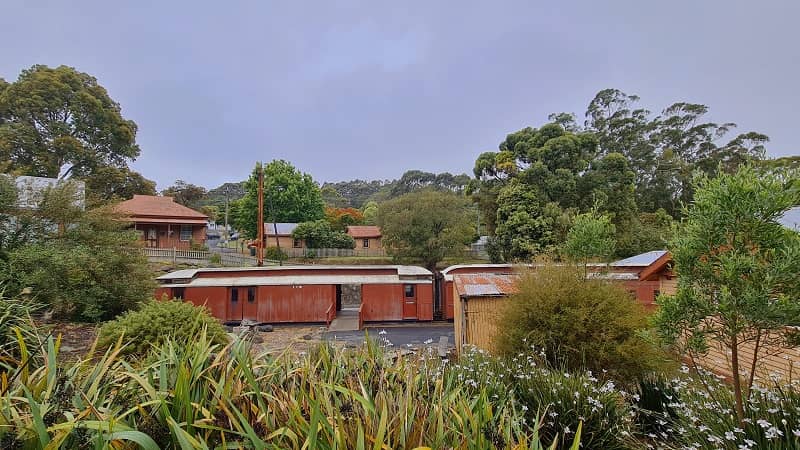Korumburra is an attractive rural town situated among rolling hills on the edge of the Strzelecki Ranges. It’s a town rich in history and centrally located to many of South Gippsland’s major tourist attractions.
The area’s most unique and popular attraction is Coal Creek Community Park & Museum. The park was established in 1974 and portrays an era between 1870 and 1920, a time of early settlement when agriculture and black coal were the main industries in the area. It’s also for the Prom Country Visitor Information Centre and many local community groups and organizations; it has an extensive educational program for schools and holds several popular events throughout the year.
In 1872, black coal was discovered in the area and Korumburra became a major supplier of coal that fueled Victoria’s trains until 1958 when the last coal mine closed. Many of the original miner’s cottages can still be seen in town and are still used for housing.
Construction of the South Gippsland railway line began in 1888 and the last section from Loch to Korumburra was completed in 1891. The first load of coal sent by rail to Korumburra was from the Coal Creek mine in 1892. Other lines were then built from mines in Jumbunna and Outtrim. The railway line closed in 1993 and the Korumburra station, a magnificent Queen Anne-style building constructed in 1907, is now listed on the Victorian Heritage Register.
In the 1880s, after black coal was discovered in the area, a mine was established at Coal Creek that operated until 1958. The park, initially known as Coal Creek Heritage Village was established on the site in 1974 as an open-air museum. In 2014, it became a community space and an accredited museum with the name Coal Creek Community Park and Museum.
Several community groups then got together to try to save the old buildings, by moving them to one place; subsequently, heritage villages popped up as a preservation point.
The Coak Creek was established with the help of donated land and a grant of AUD80,000 dollars from The Victorian Government. The use of the land was to be for tourism only and the site is operated under the same agreement today.
The first building the community wanted to save was the courthouse, which was built on Bridge Street in Korumburra (circa 1900), followed by Kowera Church, Jeetho School House, and the Mine Manager’s Cottage. These now form the heart of 53 building heritage villages.
The park which has undergone many changes over 40 years of operation is still managed by the South Gippsland Shire. It now houses around 30,000 historical objects ranging from trains and thimbles with every piece seen as being an integral part of telling the story of life in South Gippsland during early settlement.
Continue scrolling for more photos during our recent visit:
The Coal Creek Community Park and Museum are open 5 days a week, on school holidays, and public holidays and ENTRY IS FREE, and no booking is required (however, a donation is acceptable).
As Gippsland’s largest open-air heritage village, the vast collection of original buildings and objects tell the story of the coal mining, agricultural, transportation, and social history of the southern Gippsland region.
The park is nestled in 27 hectares of an undulating landscape which was planted with 40,000 seedlings by the community, to create a flora and fauna sanctuary for you to enjoy.
We acknowledge the Bunurong and GunaiKurnai people as the Traditional Custodians of South Gippsland and pay respect to their Elders, past, present, and future, for they hold the memories, traditions, culture, and hopes of Aboriginal and Torres Strait Islander people of Australia.
Coal Creek Community Park and Museum
Address: 12 Silkstone Rd, Korumburra VIC 3950
(03) 5655 1811
Open Friday to Monday
10am - 4pm
Website: coalcreekcommunityparkandmuseum.com















































Post a Comment